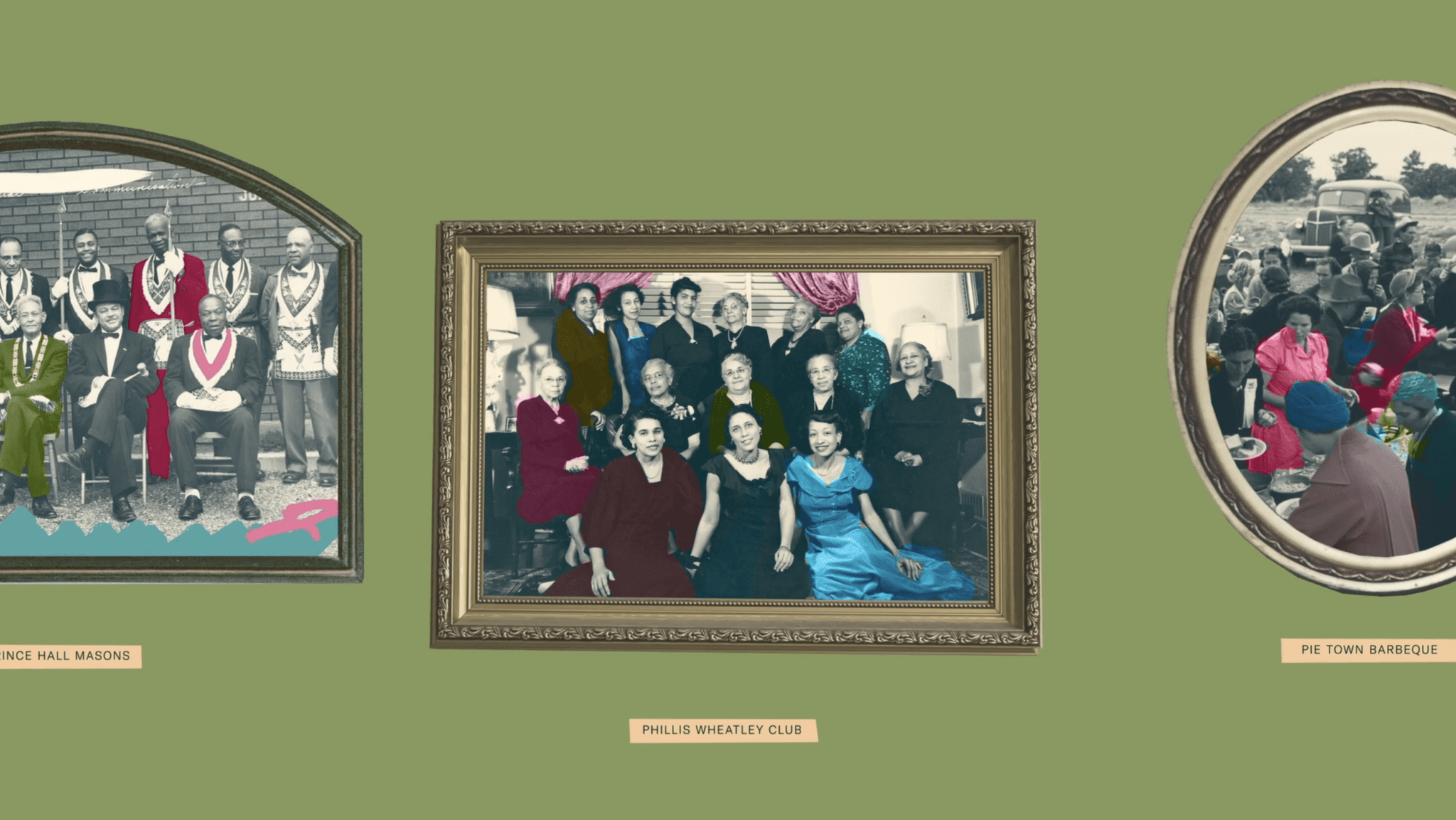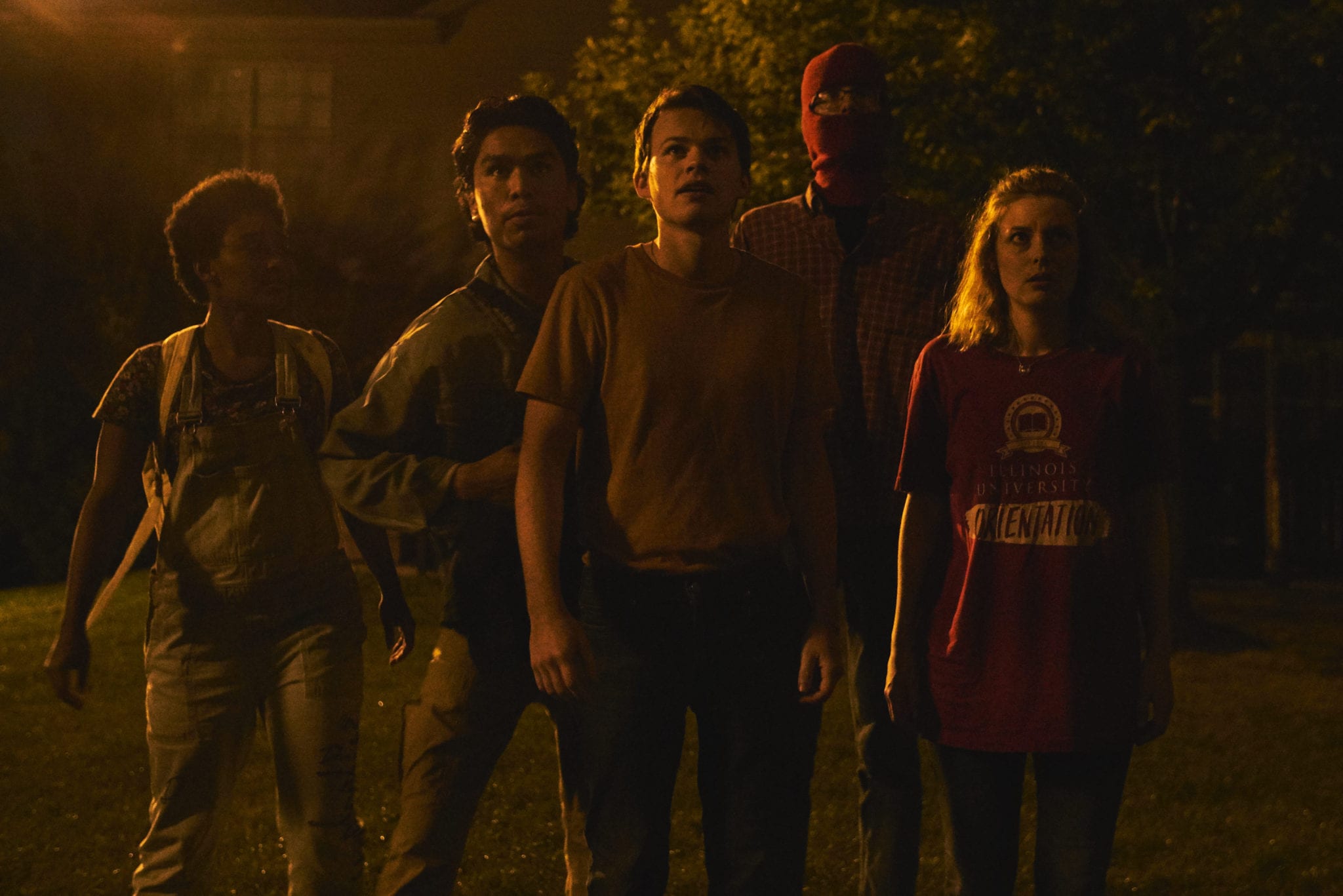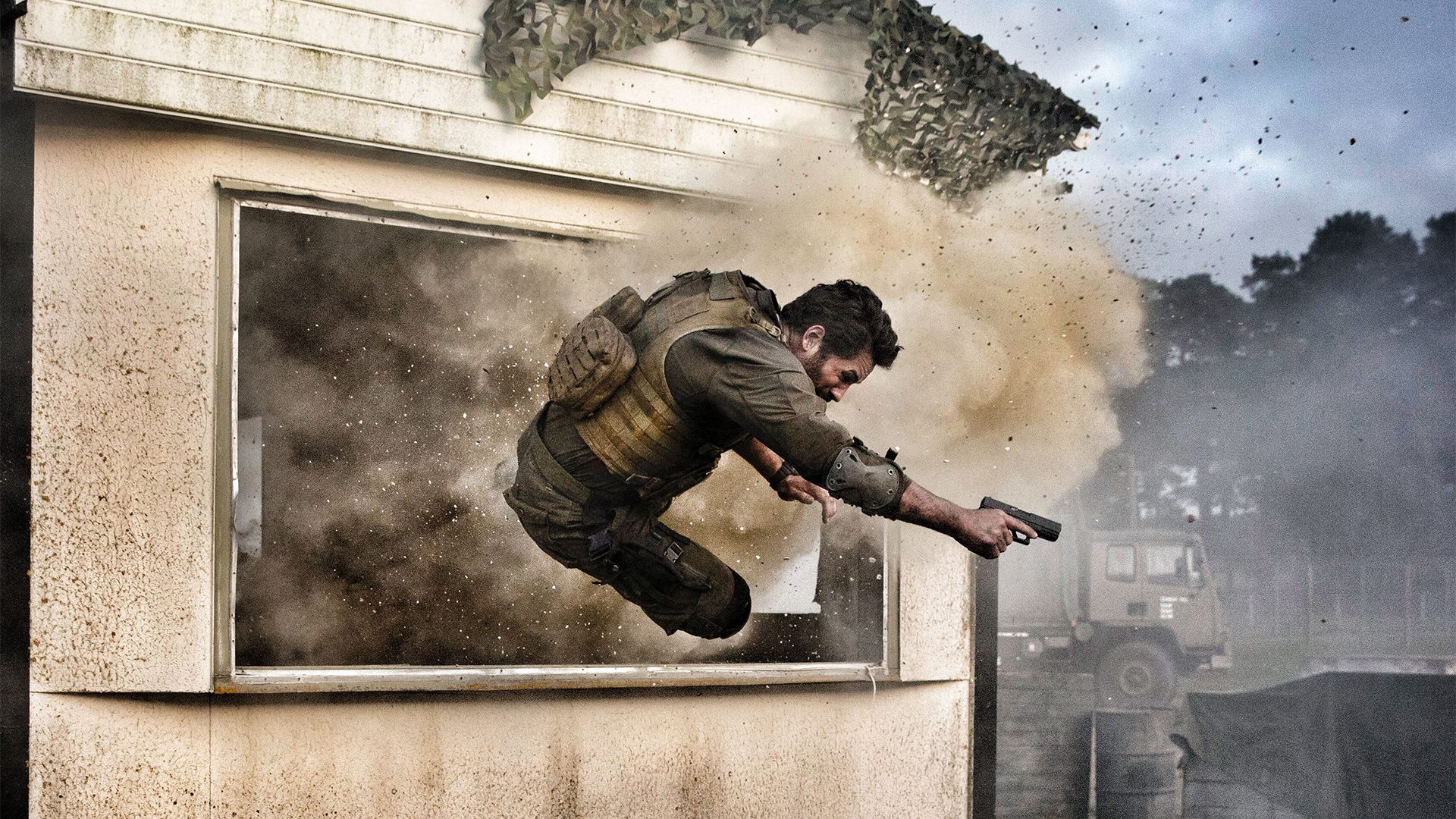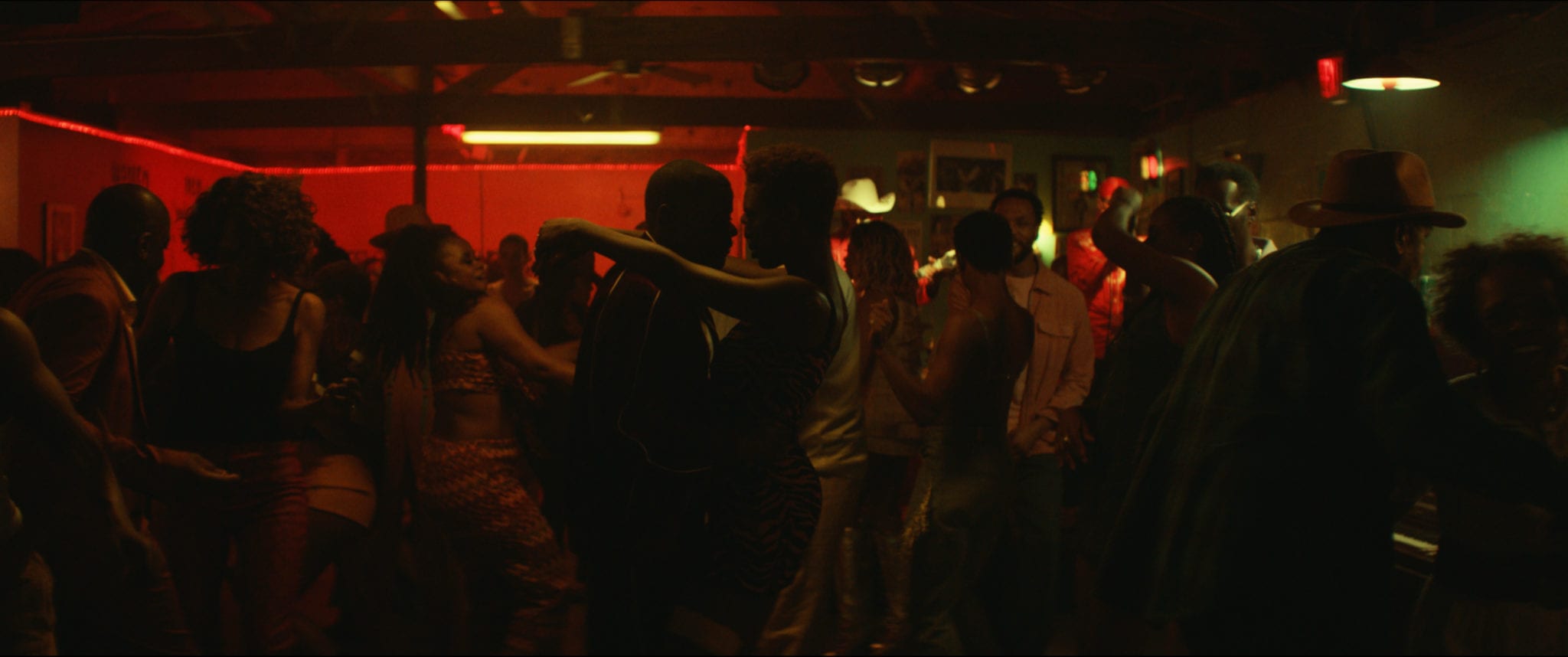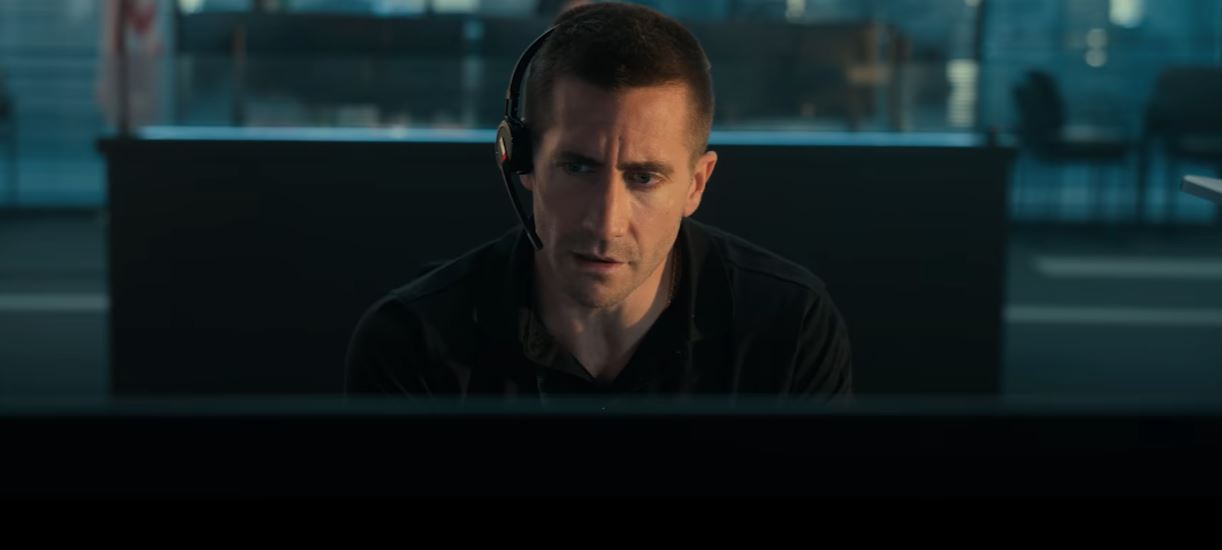Very early on, Pete Davis (who directs and produces along with his sister Rebecca Davis) clearly states the premise of Join or Die: “This is a film of why you should join a club—and why the fate of America depends on it.”
The film focuses on the work of Harvard political sociologist Robert Putnum (under whom Pete Davis studied). Putnum achieved notoriety with a paper and later a book (published in 2000) entitled Bowling Alone. It noted that over decades, people are joining fewer things. The example of bowling. More people are bowling than twenty years ago, but fewer people are in bowling leagues. This is something “the fate of America depends on”? Well, maybe.
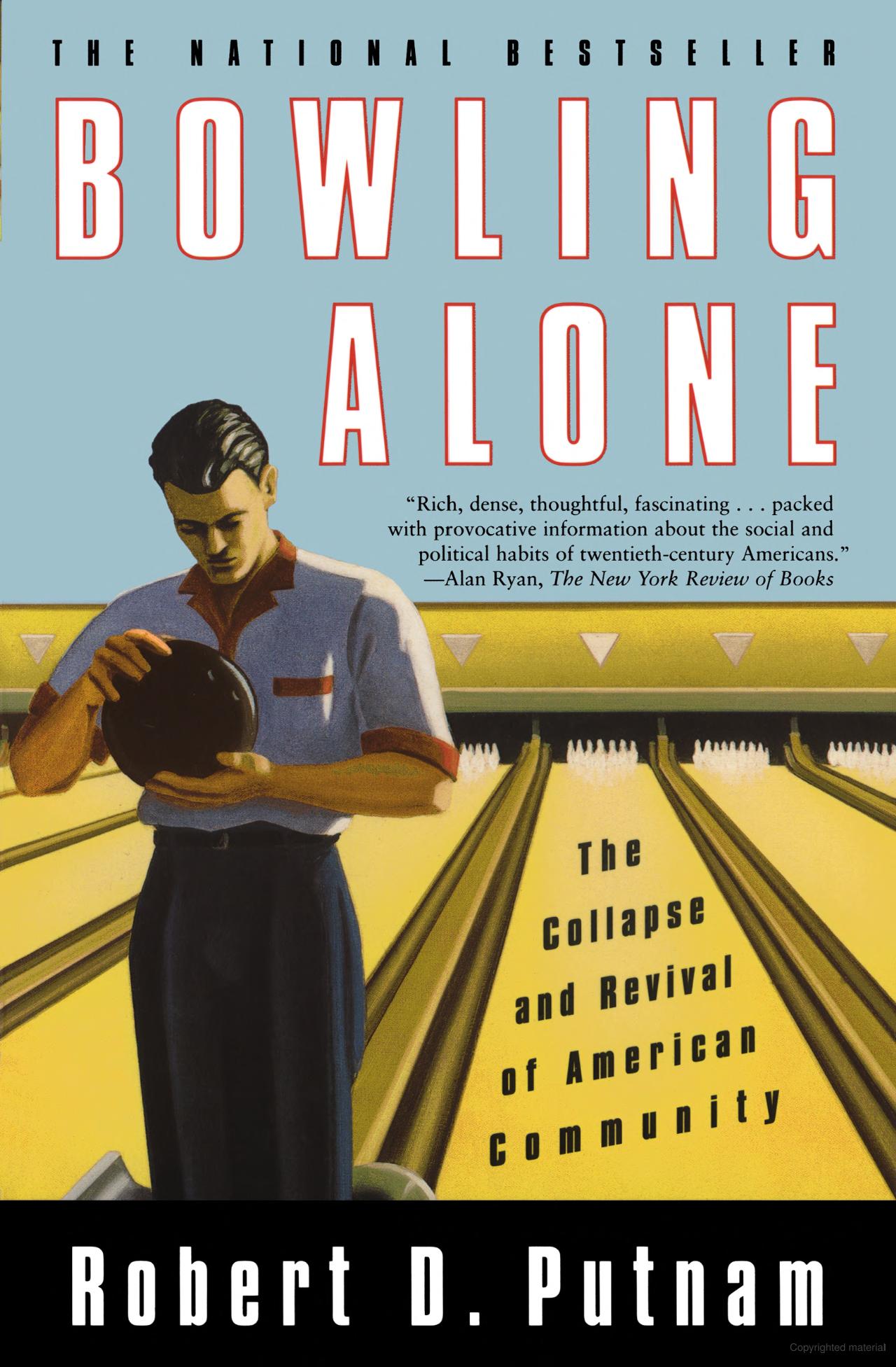
It’s not so much bowling leagues per se, as it is people being involved in anything but their own lives. Putnam has made a career of looking at the ways participation in just about anything, adds to what he calls “social capital”. (He didn’t coin that term, but he has made great use of it.) That social capital, he says, is a key element in whether a society, a city, a nation is effective.
He notes that participation in many things—PTA, unions, religious services, community service clubs, lodges, group picnics, and, of course, bowling leagues—has steadily decreased over the last half century. At the same time, people’s trust in government has also dropped at about the same rate. Is it a coincidence, or are the two connected?
The film makes the case that the more we retreat into our own lives, the less connection we have with the world and people around us. As such, we begin to only see our own concerns. In a country as divided as the US has become in recent years—and it didn’t happen overnight—the film makes the case that creating more social capital is a key part of making America work.
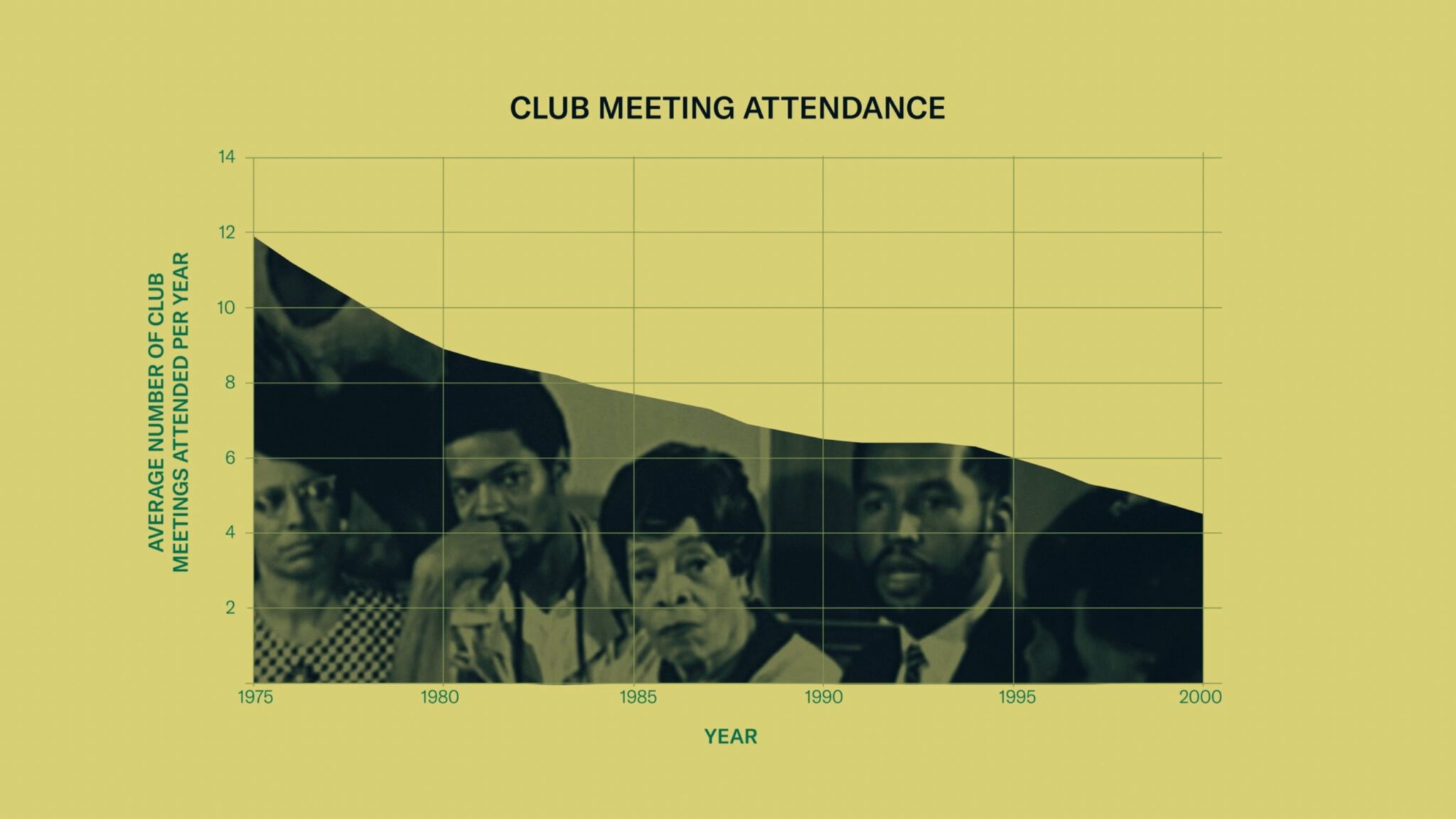
The case is bolstered by commentary from people such as former Secretary of State Hillary Clinton, Secretary of Transportation Pete Buttigieg, Surgeon General Vivek Murthy, and Senator Mike Lee, as well as others in the fields of sociology and politics.
We also see examples of some of the many ways people get together. Some of the groups we see are mission-oriented, such as Plainsong Farm, an Episcopal church and farm in Michigan, or Chicago Gig Alliance, a group of gig drivers working for better conditions. Some are social, like Red Bike & Green, a black bicycling group in Atlanta, an Oddfellow lodge in Waxahachie, TX, or Bowl Portland, a thriving bowling league in Maine.
The concept put forth in the film is that it doesn’t matter what you do; it matters that you do it with other people. In so doing, you begin to build the relationships and understanding that are the foundation of social capital.

While this may seem like a simplistic solution to a complex problem, it should be noted that it is only one approach that can be seen as a piece of a much larger puzzle. It is by no means a panacea. I wouldn’t want to use this concept to recruit for militias or the Ku Klux Klan. (The film does note the Klan at one point as an example from the past that was not a good thing.)
One area that the film needed to address a bit more fully is the role online groups may or may not add to such social capital. To what extent do such clubs, organizations, and meetings need to be face to face? Is Zoom just as good? Do groups need to have some view of making the world better, or is just being together a satisfactory end?
I expect that many people who watch this will do a brief inventory of the groups they belong to. You may ask yourself if you need to add one or two more.
Join or Die is playing in select theaters, but not widely. To learn how to host a screening for your group or community, go to joinordiefilm.com.

